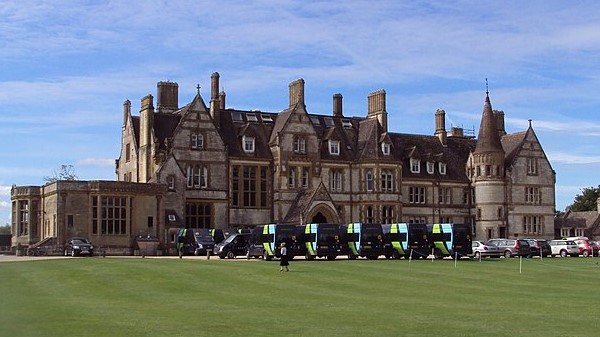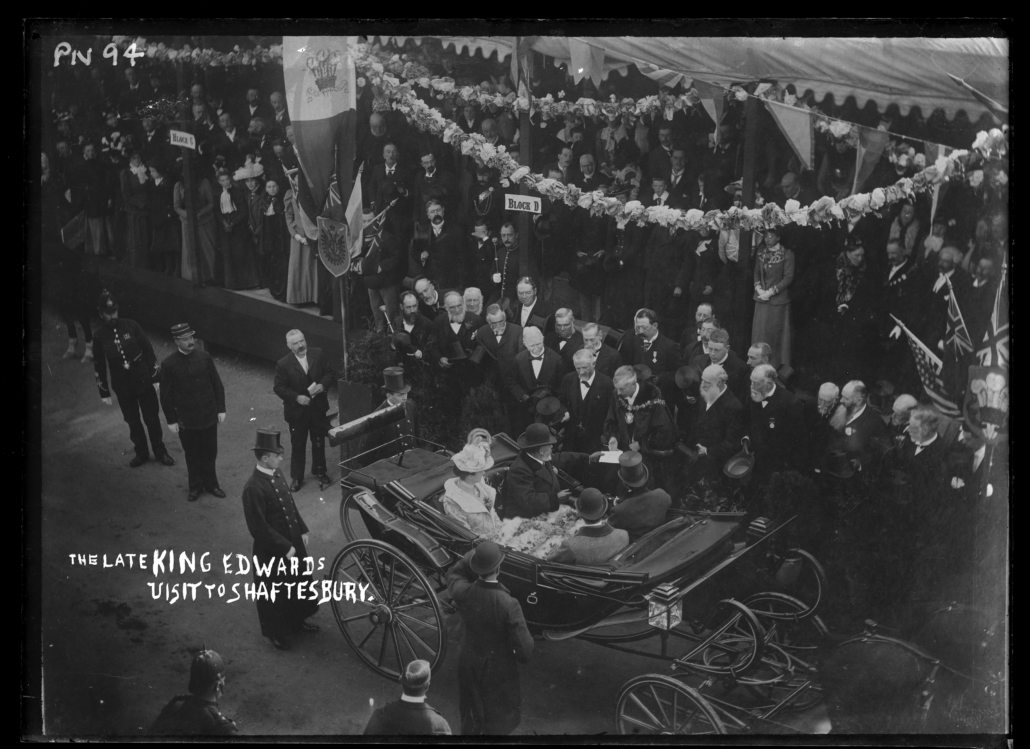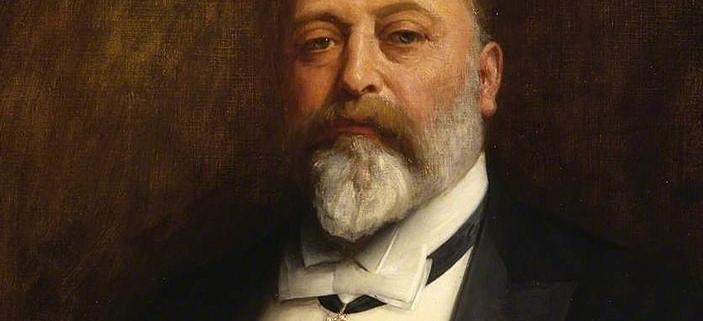More of a Pit Stop than a Royal Visit
In October 1899 Shaftesbury Council built a temporary grandstand, capacity 800, opposite the Town Hall in anticipation of a Royal Visit. The streets were festooned with bunting, and a competition was held to encourage householders to add to the blaze of colour. They needed little encouragement, as patriotic fervour was at its height in the early days of the Second Boer War in South Africa. People flooded into the town from far and wide. Prime positions were reserved for local dignitaries, such as Lord Stalbridge of the Grosvenor family who owned most of Shaftesbury until 1919; the vinegar tycoon Mark Hanbury Beaufoy ; and the Mayors of Shaftesbury and Blandford. In the event, the Royal Visit lasted just seven minutes.

The royal visitor, Edward Prince of Wales, had arrived in Dorset at Shillingstone Station on the old Somerset & Dorset line, to join a three-day shooting party at nearby Iwerne Minster. He was the guest of Lord and Lady Wolverton, George Grenfell and Georgiana Maria Glyn. The Glyns were part of a banking dynasty, and, until he succeeded to the Wolverton title, George was Liberal MP for Shaftesbury, 1857-73. In 1878 he employed perhaps the leading Victorian Gothic Revival architect, Alfred Waterhouse, whose work includes Manchester Town Hall and the Natural History Museum, to build a splendid country house. The Prince of Wales became a frequent visitor, continuing later as King, and after the house had passed into the hands of the Ismays, owners of the White Star Line and ‘Titanic.’ This explains why Shillingstone, a modest country station, boasts a rather grand canopy.

Thanks to Press reports unearthed by Hilltop History broadcaster Dave Hardiman, we have been able to place the Tyler photograph, still displayed above the stairs in Shaftesbury Town Hall, in its historical context. According to the (highly deferential) reporting, the Prince had decided to return to London two hours earlier than planned doubtless owing to the troubled condition of state affairs. It’s true that the Boer War was going badly, and perhaps Queen Victoria in her advanced years had allowed Edward rather more access to government business. However, Edward was a notorious playboy, with more than 50 mistresses during a lifetime of over-indulgence. In 1901 his waistline reached 48 inches, and in 1898 he began a relationship with the Edwardian beauty Alice Keppel (1868-1947), great-grandmother of the current Queen Consort. In spite, or perhaps because, of this reputation, he seems to have been genuinely popular. There was a continuous demonstration of loyal affection from Iwerne to Semley Station, but at Shaftesbury the inhabitants quite excelled themselves in their efforts to do honour to His Royal Highness.
Two bands played the royal procession into the town. Shaftesbury Town Band were resplendent in new uniforms, while the 1st Battalion of the Dorset Volunteers provided both a military band and a 100-strong guard of honour, drawn up in front of the Town Hall. Accompanying the Prince in his carriage were the Wolvertons and the twenty-year-old Grand Duke Michael, who was the first of the Russian Royal Family to be murdered by the Bolsheviks in 1918. Conspicuous by her absence was the much-loved Princess of Wales, Alexandra of Denmark. There can have been no time to alight, or for formal speeches; instead, printed addresses and handshakes were exchanged. After seven minutes the cavalcade moved off to Semley Station, where the 10.20 Exeter to Waterloo express made an unscheduled stop.

The inhabitants of Shaftesbury managed to fill the rest of their special day with a football match played on the cricket field, which visitors Fordingbridge Turks won 2-0, and a great deal of celebratory dining. The day’s proceedings which will be long remembered by all who witnessed them, terminated with a magnificent pyrotechnic display in the cricket field.
Claire Ryley and Ann Symons look forward to observations from the audience about other images from the Tyler Collection at 2.30 on 06 December at Gold Hill Museum. This presentation is free to members of The Shaftesbury & District Historical Society, while non-members may pay £3 at the door.



